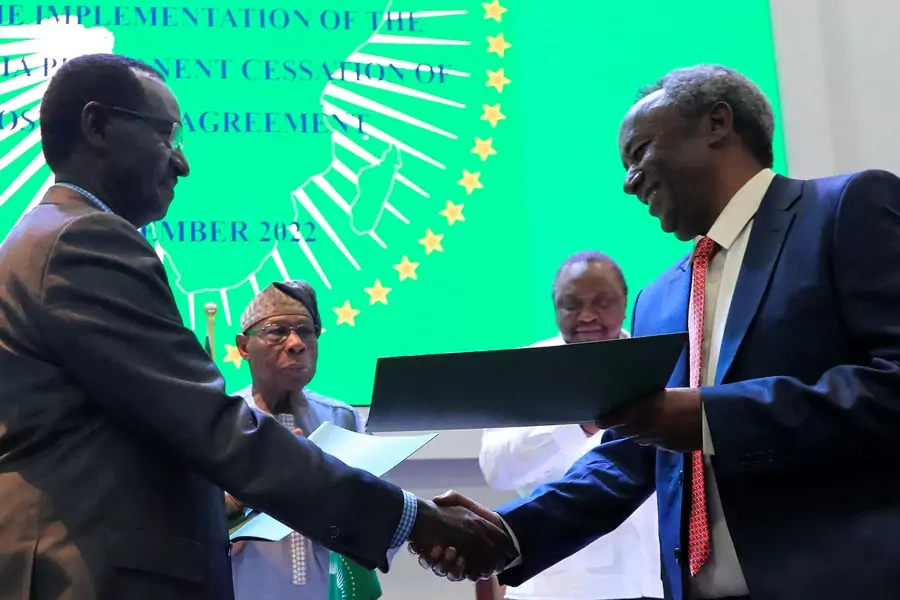Progress Towards Peace for Ethiopia’s Tigray Conflict

Over the weekend in Nairobi, negotiators representing the Ethiopian state and the Tigray People’s Liberation Forces (TPLF) agreed to an implementation plan for the permanent cessation of hostilities agreement struck earlier this month in South Africa. The Nairobi agreement fleshed out details of the earlier deal, providing greater reason to hope that a senseless and vicious conflict may be placed firmly in the past. Among other provisions, the deal establishes that rapid disarmament of Tigrayan forces will occur concurrently with the withdrawal of foreign forces and ethnic militia in the region. It also clarifies the procedures for moving humanitarian assistance into the region.
Of course, there remain unanswered questions, uncomfortable ambiguities, and as-yet undelivered results that continue to temper optimism. Eritrean forces have been among the major antagonists in the conflict, but are never mentioned by name in the agreement, and the Eritreans themselves have not been party to any of the peace talks. Eritrea’s actions will be driven by its own strategic agenda, which sees Ethiopia’s weakness as essential for Eritrean security. Ethiopian forces are charged with protecting civilians in the region, but the agreement provides little clarity about what recourse those civilians might have if the military does not adhere to that commitment. Some in Ethiopia’s Amhara community will demand rewards for their participation in the Tigray conflict, and it remains to be seen if those demands can be accommodated without irreparably alienating other groups. Issues of accountability for the horrific human rights violations that occurred over the two-year conflict remain unaddressed. Urgently needed medical and humanitarian assistance still is not flowing into Tigray at anything near the scale and pace needed. More broadly, even if implementation of this deal goes perfectly, festering conflicts elsewhere in Ethiopia continue to weaken the state.
More on:
Focusing attention on resolving these immediate implementation challenges is essential for easing suffering and building lasting peace. But the United States will also have to reckon with difficult questions in shaping the contours of a fundamentally different bilateral relationship with Ethiopia. Not long ago, the country was a vital security partner and a critical diplomatic center of gravity in the Horn. For a brief period, after Prime Minister Abiy Ahmed ascended to power, it appeared that Ethiopia could play a central role both in representing broad African priorities on the global stage and an important part in democracies’ efforts to reform the rules-based international order. That promise has evaporated for the foreseeable future; an end to the Tigray conflict cannot resuscitate it. A government willing to deliberately starve its own people, voluntarily cede some of its sovereignty to a highly militarized and authoritarian neighbor, stoke ethnic hatred, and scapegoat whole swathes of its population is not an appealing prospective partner. The United States must now support and incentivize progress on implementation of the peace without deluding itself into imagining that broad U.S. strategy in the region, or the bilateral relationship, can return to the status quo ante.
More on:
 Online Store
Online Store